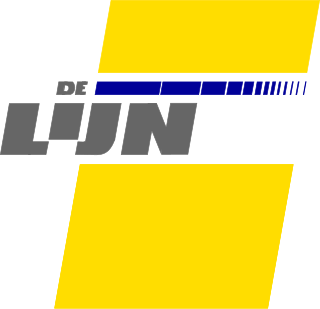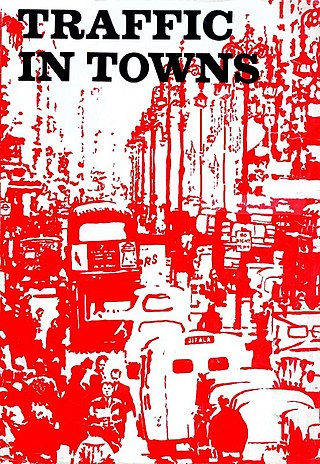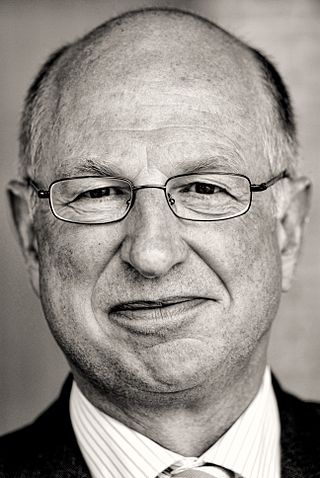Related Research Articles

Transport in Belgium is facilitated with well-developed road, air, rail and water networks. The rail network has 2,950 km (1,830 mi) of electrified tracks. There are 118,414 km (73,579 mi) of roads, among which there are 1,747 km (1,086 mi) of motorways, 13,892 km (8,632 mi) of main roads and 102,775 km (63,861 mi) of other paved roads. There is also a well-developed urban rail network in Brussels, Antwerp, Ghent and Charleroi. The ports of Antwerp and Bruges-Zeebrugge are two of the biggest seaports in Europe. Brussels Airport is Belgium's biggest airport.

Ghent is a city and a municipality in the Flemish Region of Belgium. It is the capital and largest city of the East Flanders province, and the third largest in the country, after Brussels and Antwerp. It is a port and university city.

Parking is the act of stopping and disengaging a vehicle and leaving it unoccupied. Parking on one or both sides of a road is often permitted, though sometimes with restrictions. Some buildings have parking facilities for use of the buildings' users. Countries and local governments have rules for design and use of parking spaces.

Pedestrian zones are areas of a city or town restricted to use by people on foot or human-powered transport such as bicycles, with non-emergency motor traffic not allowed. Converting a street or an area to pedestrian-only use is called pedestrianisation.

The car-free movement is a broad, informal, emergent network of individuals and organizations, including social activists, urban planners, transportation engineers, environmentalists and others, brought together by a shared belief that large and/or high-speed motorized vehicles are too dominant in most modern cities. The goal of the movement is to create places where motorized vehicle use is greatly reduced or eliminated, by converting road and parking space to other public uses and rebuilding compact urban environments where most destinations are within easy reach by other means, including walking, cycling, public transport, personal transporters, and mobility as a service.

Vlaamse Vervoersmaatschappij De Lijn, usually known as De Lijn, is a company run by the Flemish government in Belgium to provide public transportation with about 2240 buses and 399 trams. De Lijn was founded in 1991 after the public transportation companies of Antwerp and Ghent fused with the Flemish part of the NMVB.

A carfree city is an urban area absent of motor vehicles. Carfree cities rely on public transport, walking, and cycling for travel as opposed to motor vehicles. Districts where motor vehicles are prohibited are referred to as carfree zones. Carfree city models have gained traction in the second half of the 20th century due to issues with congestion and infrastructure, and proposed environmental and quality of life benefits. Many cities in Asia, Europe, and Africa have carfree areas due to the cities being created before the invention of motor vehicles, while many developing cities in Asia are using the carfree model to modernize their infrastructure.

Gent-Sint-Pieters railway station is the main railway station in Ghent, East Flanders, Belgium, and the fourth-busiest in Belgium and busiest in Flanders, with 17.65 million passengers a year. The station is operated by the National Railway Company of Belgium (NMBS/SNCB).
A low-emission zone (LEZ) is a defined area where access by some polluting vehicles is restricted or deterred with the aim of improving air quality. This may favour vehicles such as bicycles, micromobility vehicles, (certain) alternative fuel vehicles, hybrid electric vehicles, plug-in hybrids, and zero-emission vehicles such as all-electric vehicles.

Brugge railway station is the main railway station in Bruges, West Flanders, Belgium. The station opened on 12 August 1838 on railway lines 50A, 51 and 66. The current building has been in use since 1939. The station is one of the busiest in Belgium. The train services are operated by the National Railway Company of Belgium (NMBS/SNCB).

Traffic in Towns is an influential report and popular book on urban and transport planning policy published 25 November 1963 for the UK Ministry of Transport by a team headed by the architect, civil engineer and planner Colin Buchanan. The report warned of the potential damage caused by the motor car, while offering ways to mitigate it. It gave planners a set of policy blueprints to deal with its effects on the urban environment, including traffic containment and segregation, which could be balanced against urban redevelopment, new corridor and distribution roads and precincts.

A telephone number in Belgium is a sequence of nine or ten digits dialed on a telephone to make a call on the Belgian telephone network. Belgium is under a full number dialing plan, meaning that the full national number must be dialed for all calls, while it retains the trunk code, '0', for all national dialling.

A site plan or a plot plan is a type of drawing used by architects, landscape architects, urban planners, and engineers which shows existing and proposed conditions for a given area, typically a parcel of land which is to be modified. Sites plan typically show buildings, roads, sidewalks and paths/trails, parking, drainage facilities, sanitary sewer lines, water lines, lighting, and landscaping and garden elements.

Donald Curran Shoup is an American engineer and professor in urban planning. He is a research professor of urban planning at University of California, Los Angeles and a noted Georgist economist. His 2005 book The High Cost of Free Parking identifies the negative repercussions of off-street parking requirements and relies heavily on 'Georgist' insights about optimal land use and rent distribution. In 2015, the American Planning Association awarded Shoup the "National Planning Excellence Award for a Planning Pioneer."
The European Council of Spatial Planners (ECTP-CEU) is the umbrella organisation for spatial planning institutes in Europe. It was founded in 1985. In June 2014 it had 32 members in 24 European countries. When they join, new member organisations sign an International Agreement on the nature of spatial planning, the responsibilities of planners, common educational standards and a code of conduct. It runs an Awards Scheme every two years, giving prizes for outstanding work in creating attractive places.

The Belgian railway line 50 is a railway line in Belgium connecting Brussels to Ghent. The first section between Ghent and Schellebelle was finished in 1837, offering a connection to Brussels through Dendermonde and Mechelen. The section between Schellebelle and Brussels was completed on 1 May 1856.

Leuven railway station is the main railway station in Leuven, Flemish Brabant, Belgium. The station is operated by the National Railway Company of Belgium (NMBS/SNCB) and is located on railway line 36. In 2007, it was the fifth-busiest station in Belgium, only preceded by the three main Brussels stations and Gent-Sint-Pieters railway station.

Aalst railway station is a railway station in Aalst, East Flanders, Belgium. The station opened on 9 June 1853 and is located on railway lines 50 and 82. The train services are operated by the National Railway Company of Belgium (NMBS/SNCB).

Frank Beke is a Flemish politician of the Socialistische Partij Anders. He served as Mayor of Ghent from 1995 to 2006, and as city councilor in the same city from 1983 to 2006.

Parking mandates or parking requirements are policy decisions, usually taken by municipal governments, which require new developments to provide a particular number of parking spaces.
References
- ↑ Fisher, Brueggman; 'Real Estate Finance and Investments', 14th edition. Chapter 16, "Project Development"
- ↑ Planning for internal circulation in buildings
- ↑ Het circulatieplan Gent
- ↑ Rutter, Tamsin (2016-11-28). "Car-free Belgium: why can't Brussels match Ghent's pedestrianised vision?". The Guardian. ISSN 0261-3077 . Retrieved 2019-02-02.
- ↑ Het circulatieplan Gent
- ↑ Rutter, Tamsin (2016-11-28). "Car-free Belgium: why can't Brussels match Ghent's pedestrianised vision?". The Guardian. ISSN 0261-3077 . Retrieved 2019-02-02.
- ↑ Rutter, Tamsin (2016-11-28). "Car-free Belgium: why can't Brussels match Ghent's pedestrianised vision?". The Guardian. ISSN 0261-3077 . Retrieved 2019-02-02.